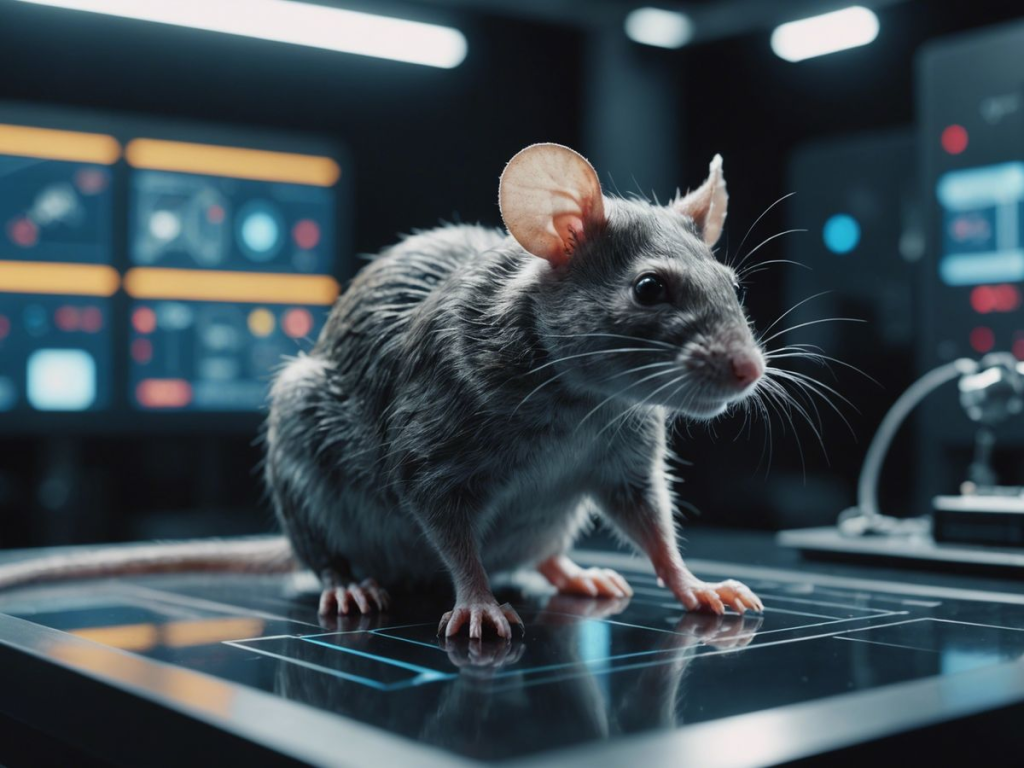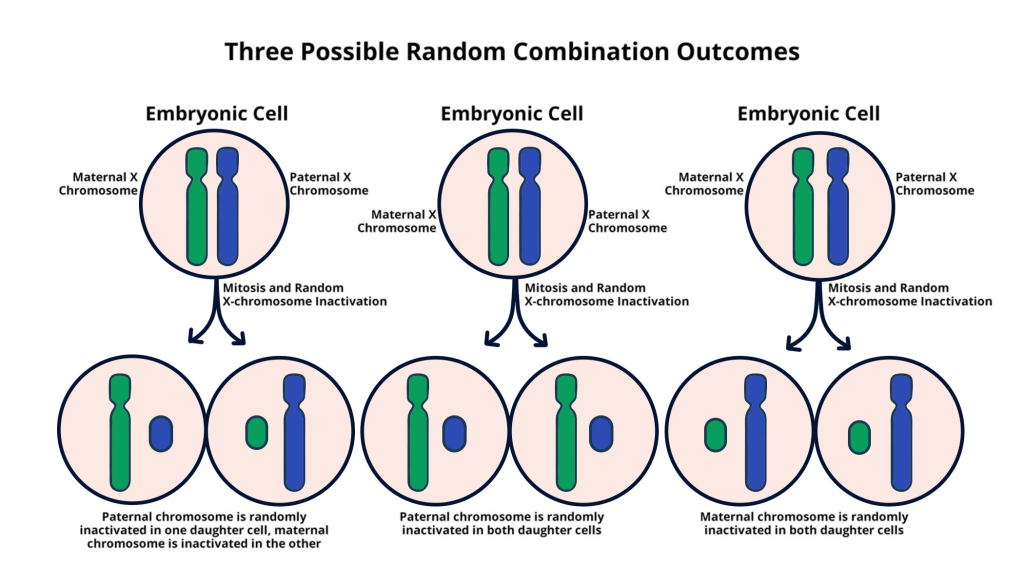
AI in understanding rat behavior is revolutionizing the way researchers explore the intricate connections between neurological functions and social interactions. By utilizing advanced machine learning techniques, scientists can now analyze the social behavior of rats with unprecedented accuracy, contributing to a deeper understanding of animal behavior studies. This innovative approach not only tracks individual movements but also provides insight into patterns of interaction that can shed light on complex conditions such as autism and genetics. With over 110 million 3D poses analyzed, researchers are uncovering the subtle nuances of how rats engage with one another, tapping into their unique personalities and social dynamics. As AI continues to enhance our understanding of the social lives of these creatures, it opens new avenues for research that bridges the gaps between animal studies and human behavior.
Delving into the cognitive and social dynamics of rodents, researchers are leveraging artificial intelligence to gain profound insights into how these animals interact and communicate. This cutting-edge exploration of rodent social behavior not only paves the way for understanding broader implications in genetics and autism but also introduces multidisciplinary perspectives in the study of animal behavior. With the implementation of sophisticated data analysis techniques, scientists can now observe and quantify the social exchanges among rats, thereby enriching our understanding of their complex interactions. By bridging the realms of technology and biology, this research aims to unlock new therapeutic approaches for understanding human conditions derived from behavioral parallels in rats. Ultimately, these advancements prompt a reevaluation of conventional paradigms in both animal and human behavioral research.
AI in Understanding Rat Behavior
The incorporation of artificial intelligence in the study of rat behavior marks a significant breakthrough in biological research. By utilizing machine learning algorithms, researchers can accurately track and analyze the intricate social interactions among rats. This technology enhances the depth of behavioral studies, allowing scientists to quantify movements and behaviors that were previously subject to human interpretation and bias. The dataset compiled from video analysis allows for over 110 million distinct pose captures, showing how these animals engage with one another. This robust amount of data not only aids in understanding social dynamics among rats but also contributes to broader investigations into social behaviors across species.
As researchers delve deeper into these findings, the parallels between rat and human behavior become strikingly evident. By observing communication methods in rats, scientists can gain insights into the biological underpinnings of social interaction in humans. With autism and genetics at the forefront of today’s research, the parallels drawn between rat social behavior and autism spectrum disorders provide a vital framework. Understanding how genetic variations influence social interactions in rats may pave the way for uncovering critical information about similar mechanisms in humans.
Machine Learning in Behavioral Biology
The application of machine learning in behavioral biology represents a revolutionary shift in how researchers analyze animal behavior. Traditional methods of observing and documenting animal movements often involved tedious hours of footage review and subjective interpretation. However, with advancements in AI, researchers can now employ sophisticated algorithms that systematically analyze video data, extracting vital information that unveils social patterns and interactions in real-time. This methodology establishes a new standard for objectivity in behavioral studies, ensuring that observations can be replicated and verified, thus enhancing the reliability of research outcomes.
Moreover, the ability for machine learning systems to handle vast amounts of data allows researchers to uncover complex patterns in animal behavior that may have previously gone unnoticed. The insights gained from machine learning models not only enrich our understanding of rat social behavior but also elevate the overall study of animal behavior, paving the way for interdisciplinary approaches that combine biology, psychology, and computer science.
Insights into The Social Behavior of Rats
Rats are inherently social animals, exhibiting patterns of interaction that are comparable to human social structures. By systematically studying these behaviors, researchers uncover a variety of interaction types, such as grooming, play, and aggression, that reflect underlying social hierarchies and relationships within rat communities. These social behaviors are critical for establishing bonds and navigating the complexities of living in groups, which can provide a deeper understanding of social behavior in higher mammals, including humans.
Studies into the social behavior of rats also reveal the nuances of personality among individual animals. Similar to humans, rats exhibit variations in temperament that can influence their interactions with peers. For instance, some rats may be more dominant or aggressive, while others may display more submissive or playful behaviors. This variability enriches the dialogue around social behavior and personality traits, further suggesting that understanding rat behavior could illuminate the foundations of social psychology and behavioral genetics.
Connecting Autism and Genetics Through Rat Studies
Emerging research into autism spectrum disorders reveals a critical connection between genetics and social behavior, which is being explored through studies involving genetically modified rats. These genetically altered rats, which demonstrate variations in high-risk autism genes, provide a unique opportunity for scientists to observe how specific genetic changes might impact social interactions. By using rats as models, researchers can investigate the effect of these mutations on both brain function and behavior, helping to bridge the gap between genetic predisposition and observable social behavior.
The conclusions drawn from these studies suggest that while autism is a complex human condition influenced by genetic factors, its roots can sometimes be traced through animal models such as rats. By analyzing how these animals socialize, researchers gain insights into the behavioral anomalies associated with autism, including differences in social engagement and interaction styles. This research not only sheds light on the genetic complexities of autism but also holds promise for potential therapeutic avenues based on the behavioral parallels found in animal studies.
Research on Animal Behavior: Methods and Innovations
The study of animal behavior has evolved significantly with the introduction of innovative methodologies that enhance observational capabilities. Researchers now utilize high-resolution video technology coupled with AI-driven analysis to capture and interpret behaviors that would have been challenging to assess through traditional means. This shift fosters a more accurate understanding of the animal kingdom, from their social interactions to the nuanced ways they communicate and learn from one another.
In the context of rats, leveraging these new methods allows for a detailed mapping of social behavior, providing insight into how animals navigate their environments and relate to one another. This not only contributes to our comprehension of rat societies but also expands the horizons of behavioral research, encouraging interdisciplinary collaboration that can improve models of social behavior that encompass various animal species.
The Importance of Observing Social Dynamics
Understanding social dynamics is crucial for comprehending both animal and human behavior. The interactions among rats serve as a microcosm for larger societal patterns, revealing how environmental factors, genetic predispositions, and learned behaviors converge to shape social structures. By meticulously documenting these interactions, researchers can identify key behavioral trends that may parallel human social interactions, fostering greater insight into our own complex social landscapes.
Moreover, unraveling the social dynamics of rats can have far-reaching implications in various fields, from psychology to genetics. Insights gained through these studies can inform therapeutic practices aimed at alleviating social difficulties in humans, particularly concerning disorders like autism. By recognizing the intricate display of social behaviors in rats, researchers stand to enhance our understanding of both the biological and environmental influences that dictate social interactions.
Behavioral Patterns and Their Implications
The patterns of behavior exhibited by rats provide a rich tapestry from which researchers can draw parallels to human social constructs. By studying these animals’ interactions, scientists uncover not just social norms but also the underlying brain mechanisms that dictate such behaviors. This understanding can lead to significant advancements in fields like neuroscience and psychology, where researchers can analyze how similar behaviors in humans may be affected by brain structure and function.
These behavioral patterns also have profound implications for mental health research, particularly in understanding conditions like autism. By studying the social behaviors of genetically modified rats, researchers can gain insights into how specific genetic factors may correlate with social behavioral changes, potentially paving the way for innovative therapeutic strategies. As research continues to evolve, the integration of behavioral patterns observed in rats fosters a deeper understanding of the complexities surrounding social behavior across species.
Interactive Technologies and Ethology
The integration of interactive technologies into ethological studies represents an exciting frontier for behavioral research. Advanced computational tools and machine learning algorithms not only streamline the process of data collection but also enhance the analysis of the vast arrays of behavior produced by animals like rats. With the help of these technologies, researchers can track subtle behaviors and interactions that would be challenging to capture with manual methods.
As technology continues to advance, the potential for improving our understanding of animal behavior grows exponentially. By leveraging these innovations, researchers can investigate the significance of different gestures, interactions, and social cues within rat communities, leading to richer discussions about the evolution of social behavior in mammals. This evolving synergy between technology and biology holds the promise of uncovering deeper insights into the social lives of rats and, by extension, their implications for human behavior.
The Role of Environmental Factors in Rat Behavior
Environmental factors play a pivotal role in shaping not only rat behavior but also broader animal interactions. Rats display flexibility in their social structures, often modifying their behaviors in response to changing environmental contexts, such as the availability of resources or social stressors. By studying these adaptive behaviors, researchers can gain a more nuanced understanding of the influences at play in social dynamics.
These observations extend beyond mere adaptation; they connect environmental changes to behavioral outcomes. Understanding how rats adjust their social interactions based on external stimuli provides vital clues for comprehending similar behaviors in other species, including humans. This emphasizes the importance of ecological factors in behavioral studies and points to potential interventions that may help in addressing social deviations relevant to human psychology.
Future Directions in Behavioral Research
The future of behavioral research is poised to take significant strides with the introduction of cutting-edge technologies and interdisciplinary approaches. As researchers refine techniques in both machine learning and behavioral analysis, the potential for groundbreaking discoveries in rat behavior will expand. Innovations in this field will not only enhance our understanding of the social lives of rats but will also lay the groundwork for comparative studies that link animal behavior to human psychology.
Looking ahead, researchers aim to probe deeper into the intricacies of social behavior by investigating the neural circuits involved in these interactions. This could lead to personalized approaches in treating social disorders in humans, informed by the behavioral patterns observed in animal models. The collaborative endeavors in this domain highlight the importance of interdisciplinary cooperation, as scientists from various fields work together to unravel the complexities of behavior, extending the reach of research beyond traditional boundaries.
Frequently Asked Questions
How is AI being used in studies of rat behavior?
AI is revolutionizing how researchers study rat behavior by employing machine learning techniques to analyze large datasets. For instance, by tracking over 110 million 3D poses of rats through video footage, researchers can objectively quantify and identify social behaviors and interactions, providing insights into the brain-behavior link.
What does the new AI method for understanding rat behavior involve?
The new AI method for understanding rat behavior involves a machine-learning pipeline that processes video recordings of rats. This technology captures intricate details of their movements, enabling researchers to observe and analyze social interactions and gestures with high accuracy and efficiency, thus enhancing traditional observation methods in rat behavior studies.
Can AI help in understanding the social behavior of rats?
Yes, AI significantly enhances the understanding of the social behavior of rats. By meticulously tracking interactions and movements in 3D space, researchers can uncover complex social dynamics and communication patterns in rats, which may also have applications in studying human social behavior and conditions like autism.
What implications does AI research on rat behavior have for autism studies?
The implications of AI research on rat behavior for autism studies are profound. By examining genetically modified rats that exhibit varying social behaviors, researchers can draw parallels to human autism, revealing how genetic mutations affect social interactions and potentially guiding new therapeutic approaches.
How does machine learning contribute to research on animal behavior?
Machine learning contributes to research on animal behavior by allowing scientists to analyze vast amounts of observational data quickly. This technology replaces subjective human observations, providing a more rigorous and reproducible method for studying behaviors, thereby enhancing our understanding of complex interactions in species like rats.
What are the benefits of using AI in the study of social behaviors in rats?
Using AI in the study of social behaviors in rats offers numerous benefits, including the ability to process large datasets efficiently, identify specific behavioral patterns without bias, and generate high-resolution 3D movement data. These advances facilitate deeper insights into animal behavior, paving the way for breakthroughs in understanding social disorders.
How do researchers utilize visual data from rat behavior studies?
Researchers utilize visual data from rat behavior studies by employing advanced AI analysis to extract movement trajectories and social interactions from recorded footage. This allows them to quantify behavioral patterns in a detailed manner, leading to improved models of how social behavior is linked to brain function.
What role do genetics play in the research on rat behavior and autism?
Genetics play a crucial role in research on rat behavior and autism, as certain gene variants in rats can mirror human genetic predispositions to autism. By studying how these genetic modifications affect social interactions in rats, researchers gain valuable insights into the biological underpinnings of autism, informing both animal and human studies.
How can the findings from AI-based rat behavior studies impact future therapies for autism?
Findings from AI-based rat behavior studies may influence future therapies for autism by identifying key brain circuits and social behavior patterns affected by genetic mutations. With this knowledge, researchers can develop targeted interventions that address specific social communication deficits associated with autism.
What are the expected outcomes from sharing the data collected in rat behavior studies?
The expected outcomes from sharing the data collected in rat behavior studies include fostering collaboration in the scientific community, enhancing models of brain-behavior relationships, and stimulating innovative approaches to understanding animal and human social behaviors, particularly in relation to disorders such as autism.
| Key Point | Description |
|---|---|
| AI Methodology | New AI techniques can track rat movements and interactions, helping researchers observe social behavior. |
| Significance in Research | Insights gained could help understand human conditions such as autism. |
| Data Analysis | The methodology allows for quantitative analysis of social gestures and interactions of rats. |
| Behavioral Patterns | Researchers have noted that rat social interactions may parallel human behaviors. |
| Genetic Studies | Research includes genetically modified rats to examine the impact on social behavior. |
| Future Research Directions | Further studies will investigate the brain mechanisms underlying social behavior in rats. |
Summary
AI in understanding rat behavior plays a pivotal role in unraveling the complexities of social interactions among these animals. Recent advancements in machine learning have enabled researchers to effectively analyze rat movements and behaviors, providing critical insights into the neural underpinnings of social behavior. As the research progresses, these findings not only enhance our understanding of rat social dynamics but also hold significant promise for illuminating aspects of human social behavior, particularly in relation to conditions such as autism.


